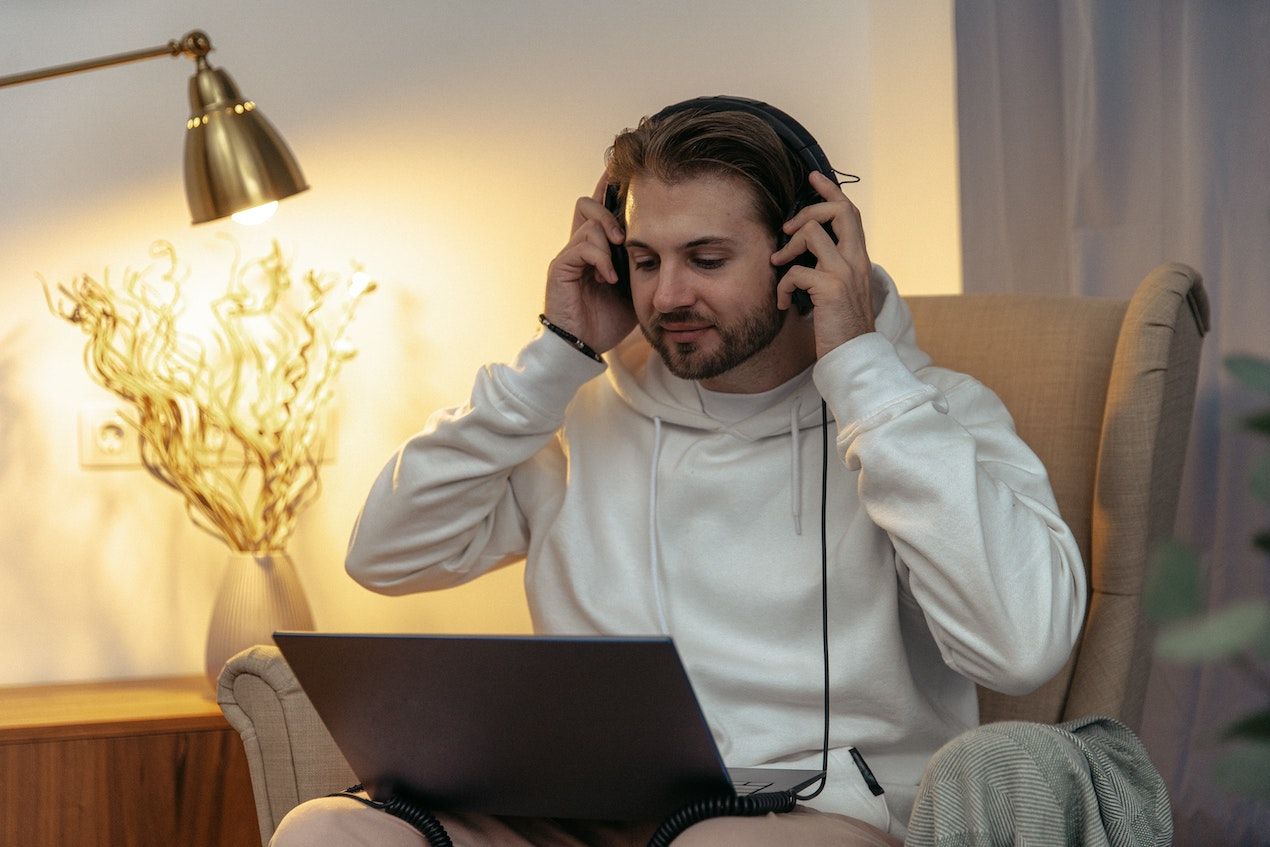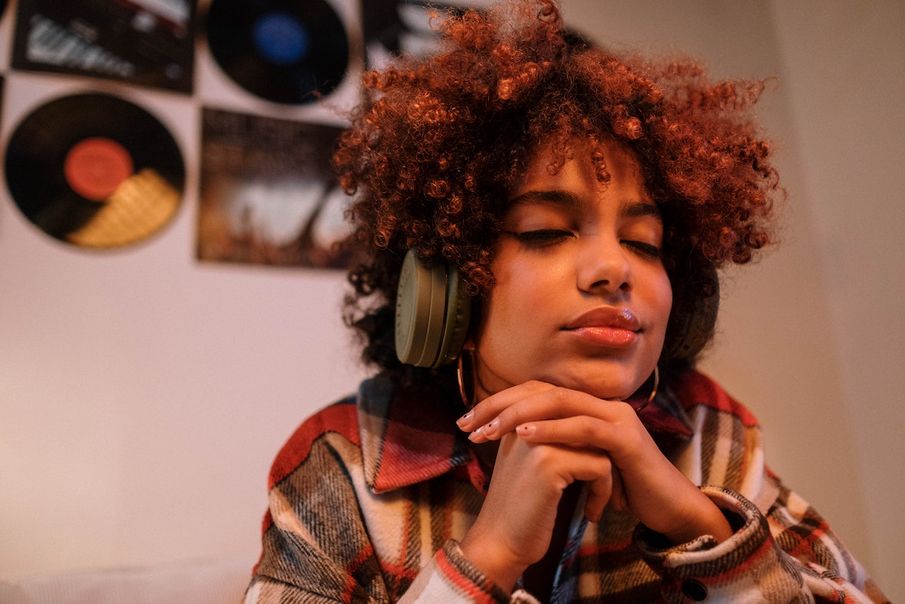From the crashing of a waterfall to the hum of machinery, or the rustling of a summer wind through trees, the spectrum of sound can have a dynamic effect on our psyche. Here, we’re exploring the power of auditory sensations, and how certain noises can nurture different needs
Sitting in a local cafe, the rhythmic tapping of my fingertips on the keyboard is accompanied by a gentle piano playlist filtering through in the background, and the constant low-level whir of a hard-working coffee machine, punctuated by the hum of other people’s conversations, and the occasional clink of coffee cups.
In many ways, the cafe’s collections of noises are my perfect soundtrack for a productive and positive writing afternoon. There’s comfort in hearing (but not being with) other people, and the familiarity of the surrounding sounds allows my brain to tune out and relax enough to completely focus on the screen and the words you’re reading now.
This sound set-up success could be attributed to more than my desire to write amongst strangers, and have caffeine on tap. Sound, including ambient like this, according to Giles Williams, music director at Rehegoo, has the ability to immediately shift our mental state, fix our focus, and take us to our own happy place.
“People are definitely becoming even more aware of the benefits and state-altering ability of certain sounds,” Giles notes. “Especially within the health and wellness industry, where there’s a rise in experimentation with sounds to help people sleep, or respond more positively to a treatment or experience.”
It’s not just big brands or wellness centres that can benefit from getting their sound spot-on though. As individuals, we can curate and create the right audio environments to thrive in. Simply scroll through any popular and trending podcast list and you’ll find shows offering white, brown, pink, and green noise, with listening notes including ‘perfect for soothing babies’, ‘brilliant for focus’, and ‘will help you drift off’. You’ll find even more on social media, as countless content creators offer bite-sized sound sessions and binaural beats clips to interrupt sustained scrolling, and add aural calm into the visual chaos.

Which sound is right for you?
White noise
With so much variety in the soundscape out there, where do you start your personal listening journey? Maybe with white noise, which first emerged in the 1960s.
“White noise is the most popular,” head sound designer, composer and founder of Audio Translation, Sean Mbaya, confirms. “It contains all frequencies found in the spectrum of sounds. It’s specifically known as ‘broadband noise’ and all frequencies including low, mid, and high are at similar loudness levels.”
Brown noise
Brown noise replicates the lower frequencies that we hear in the world around us and tends to be a deeper and richer sound; think storms, or the hum of the interior of a plane mid-flight. It can be soothing and is often soporific. “When I was a kid, going to France on the ferry, and we didn’t have enough beds in our cabins, I’d sleep on the floor and the low hum of the ferry engine sent me straight off to sleep,” Rehegoo’s Giles concurs.
“I’ll always remember that, and I associate it with brown noise.”
Listening to brown noise can have benefits beyond sleep, as executive creative director at Forever Audio, Kathleen Moroney, explains. “It’s great for focus, and it has gained popularity in recent times. Brown noise cuts distracting background noises, which is why a large number of people within the ADHD community find it particularly helpful.”
Pink noise
Pink noise has similar properties to white noise, but the higher frequencies are quieter in volume and less confronting – think of the gentle rustle of a breeze brushing through leaves, or the steady, comforting drum of a heartbeat. This sound tends to have the characteristics of a vibrant or ambient sound, and helps to reduce the impact of loud noises such as slamming doors, as well as being able to help with focus, and anxiety induced by sudden high volume sounds.
More and more people are turning to sounds for their mood in their day to day lives too. “The use of pink and brown noise for mental wellbeing and managing neurodiverse traits has seen a huge boom, particularly in the TikTok community, with a focus on mental wellbeing and managing neurodiverse traits,” Kathleen concludes.
Green noise
My personal favourite, however, is green noise. As the colour suggests, this features sounds akin to ambient noises found in nature; imagine the sea lapping on the shore, a gentle trickling of a river, or rain on the pavement. Like the beating heart of nature itself, green noise has a calming and soothing effect, connecting with the relaxing atmosphere of being at one with the outdoors.
It sits within the middle of the spectrum of frequencies, as opposed to white (which features all frequencies at the same volume), brown (focusing on the lower, deeper frequencies), and pink (all frequencies, but differing volumes with an emphasis on the lower end of the spectrum), and could be a good option for those who feel a sense of peace when walking through woodland, or watching a stream trickle by.
Spotify
Happiful: Sounds of relaxation
Podcast
Relaxing White Noise’, the podcast featuring white noise and nature sounds to help you sleep, study, or soothe a baby.
YouTube
@MindAmend offers a wide range of sounds to improve, enhance or steady your state. From smoothed brown noise to binaural beats, clear focus, and stress relief tracks.
App
Calm’s ‘classic and noise’ section features white, green, ‘brownian’
to pink noise, as well as heartbeat, rain on leaves, and waves.
Binaural beats
If you’ve yet to check out binaural beats, then head over to YouTube, search for a playlist, and pop on your headphones. This sound, for me, is one of the most impactful, providing a sense of calm and ease while enabling me to be productive at the same time. It’s a totally different experience to the cafe soundscape I described, but with a similar outcome – and it feels nice. So what kind of sound-centred magic is taking place in my earbuds?
“Binaural beats are a phenomenon where a person can take advantage of their brain’s ability to respond to sounds, and place them in a different mental state,” Katheleen says. “Many people listen to binaural beats to help with anxiety, sleep, memory, increasing concentration, and even enhancing creativity.”
But how do binaural beats work? “The sound is achieved by hearing one frequency in the left ear, and a slightly different frequency in the right ear, at the same time,” Kathleen explains. “Our brain identifies the difference in frequency of those two sounds, creating the illusion of a ‘third frequency’ within our subconscious. Our brain then takes that new frequency and maps it to one of our major brainwave states.
“When listening to audio within these specific frequency ranges, a person can induce themselves into a desired state of consciousness based on the associated characteristic of that brainwave state.”
Associated with concentration, decision making, stimulating energy and action.
. Alpha (8–12Hz)
Associated with relaxation, positive thinking, and accelerated learning.
. Theta (5–7Hz)
Associated with REM sleep, meditation, and creativity.
. Delta (1.5–4Hz)
Associated with deep sleep, pain relief, and access to unconscious mind.
What sounds good to you?
While the variety of playlists and sound tracks on offer are endless, only you’ll know what works for you, and there’s joy to be found in experimentation. Whether it’s white, brown, pink, or green noise, the babble of a busy coffee shop, or binaural beats, there will be a sound to match your need, and elevate your mood. So, take a beat, plug in, and let yourself be swept away by the soundwaves.


Comments